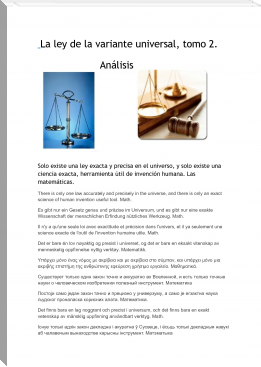Indian Army weapons by Demonsofdoubt (good non fiction books to read txt) 📕

Light machine gun,.Small taste of the Indian army.
Calibers.
Power
Might
Conflict
Air force
Navy
Special forces
Read free book «Indian Army weapons by Demonsofdoubt (good non fiction books to read txt) 📕» - read online or download for free at americanlibrarybooks.com
- Author: Demonsofdoubt
Read book online «Indian Army weapons by Demonsofdoubt (good non fiction books to read txt) 📕». Author - Demonsofdoubt
In July 2009 the Nag anti-tank guided missile (ATGM) was cleared for production.[14] The production of the Nag missile was ordered after successful summer trials were carried out in the Rajasthan desert.
The trials of the missile were conducted using an advanced imaging infrared seeker head, as per Army's requirements. On 20 January 2010, field tests of the Nag’s Thermal Sight system saw the system identify and lock on to a T-55 tank at a range of 5 km. The tank was then engaged and destroyed at a range of over 4 km [12] thus the missile’s fire-and-forget capability has been established using the day version of the IIR passive seeker.In its IIR form the Nag has limited all weather capability. This has given added impetus to develop the mmW seeker. Efforts are on to provide special embedded on-board hunters, that can hunt for targets using ‘day seekers’ and ‘day-&-night seekers’. During trials in June 2010, the short range capability of the missile to hit targets was validated. Nag missile hit a target at a range of half a kilometers in just 3 seconds.[15] In the follow on test a moving target was hit within 3.2 seconds after launch.[16] The final user trials were held during July 2010 and successfully completed. The missile has been cleared for mass production. Bharat dynamics plans to produce 100 missiles per year. The Nag missile will replace the second generation anti-tank missiles in Army armoury.[17]
The Nag will replace the existing Russian Konkours and European missile Milan, both of which are manufactured under license by Bharat Dynamics Limited. An Indian official said a country in the Middle East had shown keen interest in Nag anti-tank guided missiles during Abu Dhabi Defence Expo-2009.
Nag has successfully completed its final validation trials and is expected to join the Indian Army in 2011.Two missiles were launched against a moving target at a time another two missiles were launched against a stationary Vijayanta tank in quick succession and successfully hit the targets.
Ballistic and cruise Missilles
BrahMos (Hindi:ब्रह्मोस, Russian: Брамос) is a stealth supersonic cruise missile that can be launched from submarines, ships, aircraft or land. It is a joint venture between Republic of India's Defence Research and Development Organisation (DRDO) and Russian Federation's NPO Mashinostroeyenia who have together formed BrahMos Aerospace Private Limited. The name BrahMos is a portmanteau formed from the names of two rivers, the Brahmaputra of India and the Moskva of Russia.
It is the world's fastest cruise missile in operation.[3] The missile travels at speeds of Mach 2.8 to 3.0.[1] The land launched and ship launched versions are already in service with air launched and submarine launched versions currently under testing phase.[4] An Air launched variant of Brahmos is planned which is expected to come out in 2012 and will make India the only country with supersonic cruise missiles in their army, navy, and air force.[5] A hypersonic version of the missile is also presently under development with speed of Mach 7 to boost aerial fast strike capability. . It is expected to be ready for testing by 2007.
Though India had wanted the BrahMos to be based on a mid range cruise missile like P-700 Granit, Russia opted for the shorter range sister of the missile, P-800 Oniks, in order to comply with Missile Technology Control Regime restrictions, to which Russia is a signatory. Its propulsion is based on the Russian missile, and guidance has been developed by BrahMos Corp.BrahMos claims to have the capability of attacking surface targets by flying as low as 10 metres in altitude.[2] It can gain a speed of Mach 2.8, and has a maximum range of 290 km.[1] The ship-launched and land-based missiles can carry a 200 kg warhead, whereas the aircraft-launched variant (BrahMos A) can carry a 300 kg warhead. It has a two-stage propulsion system, with a solid-propellant rocket for initial acceleration and a liquid-fueled ramjet responsible for sustained supersonic cruise. Air-breathing ramjet propulsion is much more fuel-efficient than rocket propulsion, giving the BrahMos a longer range than a pure rocket-powered missile would achieve.
The high speed of the BrahMos likely gives it better target-penetration characteristics than lighter subsonic cruise-missiles such as the Tomahawk. Being twice as heavy and almost four times faster than the Tomahawk, the BrahMos has almost 32 times the initial kinetic energy of a Tomahawk missile (although it pays for this by having only 3/5 the payload and a fraction of the range despite weighing twice as much, suggesting a different tactical paradigm to achieve the objective). Its 2.8 mach speed means that it cannot be intercepted by some existing missile defence system and its precision makes it lethal to water targets.
Although BrahMos was primarily an anti-ship missile, the Brahmos Block III can also engage land based targets. It can be launched either in a vertical or inclined position and is capable of covering targets over a 360 degree horizon. The BrahMos missile has an identical configuration for land, sea, and sub-sea platforms.[citation needed] The air-launched version has a smaller booster and additional tail fins for added stability during launch. The BrahMos is currently being configured for aerial deployment with the Su-30MKI as its carrier.[2] On September 5, 2010 BrahMos created a record for the first supersonic steep dive.Brahmos was test fired again on March 4, 2009 and on March 29, 2009. For the test the missile had to identify a building among a cluster of buildings in an urban environment. Brahmos successfully hit the intended target in two and a half minutes of launch marking the completion of the development phase of Brahmos Block-II.[citation needed] On March 21, 2010 Brahmos was test fired and "hit a free-floating ship piercing it above the waterline and destroying it completely". The test proved the missile's ability to maneuver at supersonic speed before hitting a target, making India the first and only country to have a maneuverable supersonic cruise missile.[21] On September 5, 2010 Brahmos was test fired again. A scientist, who witnessed the test, said "The missile flew in the designated complex trajectory including large manoeuvres and steep dive. This is the first time that a supersonic dive has been realized by a cruise missile".[22]
Brahmos Block III+ was test fired from a Mobile Autonomous Launcher on December 2, 2010 with a new advanced guidance scheme incorporating large scale maneuvers at multiple points and a steep dive from high altitude with precision strike. Brahmos completed all maneuvers, hitting the target precisely.[23] On August 12, 2011 it was test fired by ground forces and met all mission parameters.[24] The BrahMos cruise missile was successfully test fired by an Indian Army unit on Sunday, 4 March 2012 at the Pokharan range in Jaisalmer to operationalise the second regiment of the weapon system in the Indian Army.[25] The test was attended by senior Army officials including Vice Chief Lt Gen Shri Krishna Singh and Director General Military Operations (DGMO) Lt Gen A K Chaudhary. With this test, the second BrahMos unit of the Indian army is now operational.
The Agni missile (Sanskrit: अग्नि, Agnī, "fire" and also the Hindu god of fire) is a family of medium to intercontinental range ballistic missiles developed by India, named after one of the five elements of nature. The first missile of the series, Agni-I was developed under the Integrated Guided Missile Development Program and tested 1991. After its success, Agni missile program was separated from the IGMDP upon realizing its strategic importance. It was designated as a special program in India's defence budget and provided adequate funds for subsequent development.Agni-I
Main article: Agni-I
The two-stage Agni technology demonstrator, with a solid-fuel first stage, was first tested at the Interim Test Range in Chandipur in 1989. It was capable of carrying a conventional payload of 1,000 kg (2,200 lb) or a nuclear warhead. This original technology demonstrator evolved into the solid-fuel Agni-1 and Agni-2 missiles. India first developed the two-stage 2000 km range Agni-2, testing it in 1999. It then used the first stage of this system to develop the 700 km range single-stage Agni-1, which was first tested in January 2002.
Weighing 12 tonne with a length of 15 metres, Agni-1 has a range of 700–1200 km[14] and is capable of carrying a conventional payload of 1,000 kg (2,200 lb) or a nuclear warhead[2] at a speed of 2.5 km/s.[3] Agni missiles consist of one (short range) or two stages (intermediate range). These are rail and road mobile and powered by solid propellants. Agni-I is used by the Strategic Force Command (SFC) of the Indian Army.[2] On 13 July 2012, India test fired Agni I successfully at Wheeler Island off Orissa coast.Agni-II
Main article: Agni-II
Agni-II ballistic missile
Agni-II with a range of 2,000–2,500 km is 20 metres long, has a diameter of one metre, and weighs around 18 tonnes. Agni - II uses solid propellant in both of its two stages.[23] They are claimed to be a part of the "credible deterrence" against China and Pakistan. India stated that its nuclear and missile development programmes are not Pakistan-centric, that the Pakistani threat is only a marginal factor in New Delhi's security calculus, and that Agni is at the heart of deterrence in the larger context of Sino-Indian equation.[24] The Strategic Forces Command, as a part of user trials, is to launch Agni-II on August 9, 2012 from the Wheeler Islands off the Orissa coast, after it successfully launched Agni-I missile on July 13, 2012.[25] The 2000 km range nuclear weapon capable missile, already inducted into country's arsenal, was successfully launched as a training exercise by the armed forces on 9 August 2012.Agni-III
Main article: Agni-III
Agni-III is the third in the Agni series of missiles. Agni III uses solid propellant in both stages.[23] Agni-III was tested on July 9, 2006 from Wheeler Island off the coast of the eastern state of Orissa. After the launch, it was reported that the second stage of the rocket did not separate and the missile had fallen well short of its target. Agni-III was again tested on April 12, 2007, this time successfully, again from Wheeler Island. On May 7, 2008 India again successfully test fired this missile. This was the third consecutive test; it validated the missile's operational readiness while extending the reach of India's nuclear deterrent to most high-value targets of the nation's most likely adversaries. Agni-III has a range of 3,500 km,[6] and can take a warhead of 1.5 tonnes.[27]
It has been reported that the missile's circular error probable (CEP) lies in the range of 40





Comments (0)